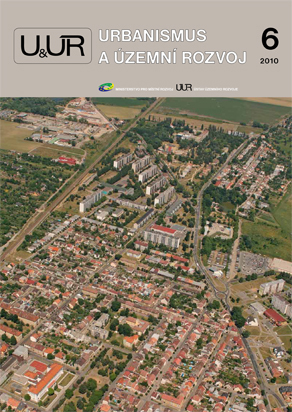
Public Spaces of Small Towns: A Theoretical Basis, by Zuzana Ambrožová
This contribution is focused on public spaces of small towns. The aim is to outline a theoretical basis for the research and evaluation of public spaces. The author describes the term “public space” in the introduction, presenting varied definitions. Following is a basic division of public spaces. The article deals thoroughly with the historical development of public spaces and town arrangement. “Small town” is another term to be explained, highlighting the importance of the specifics and problems of small towns. Attention is especially focused on squares as major public spaces of small towns. The role of parks and town gardens as creative elements is discussed too. Concludingly, some basic principles for public spaces in small towns are presented, summarizing the conditions for their revitalization.
Aspects of Making a Sign Key in Physical Planning of the Olomouc Region, by Jaroslav Burian, Barbora Hladišová and Zuzana Němcová
The article describes the making of the sign key for the documents of spatial analysis of the Olomouc Region’s municipalities. Observing the cartographic principles and consulting with representatives of involved municipalities, problems were identified such as the choice of the colour, the leading sign, generalization and combination of elements, and so forth. A set of scripts, map styles, lyr format files, and a conceptual data model have originated to be used in the obligatory drawings of the documents of spatial analysis, in their visualization in the map portal of the Olomouc Region, and for internal use of the staff of involved municipal offices.
Baroque Avenues in the Past and under Today’s Pluralism of Opinions, by Jan Borský
The baroque avenue is a linear, artificially created formation and one of the main supporting elements of composed baroque landscape. As an accessory aesthetic element of communications, baroque avenues had to be made of trees of the same age, species, treetop shape, and in regular distances, so that symmetry, periodicity, and homogeneity is applied. The current opinions about the renovation of such avenues differ according to the attitudes of various professions: environmentalists want to let them decay, preservationists wish to authentically renew them, while roads constructors want to remove them. If some renewal is done, it is mostly a compromise solution of replanting the dead trees. Is such approach corresponding to correct maintenance of historic cultural landscape?
Municipalities’ Energy Potentials, by Jiří Karásek & Eliška Ubralová
The quest for and quantification of energy potentials is currently one of the most important themes in sustainable development. Both new and formerly neglected technologies are being developed. The objective of each European government is a shift from the energetic mix, currently depending on non-renewable sources, to renewable resources of energy. When looking for new energy potentials, governments follow the developments in global technologies and regional conditions. In a case study of three different municipalities, energy potentials of local renewable energy sources in their territories have been examined, resulting in data about the extent of self-sufficiency under the use of such potentials. Besides the part of resources, energy consumption as another aspect of the energy balance is analyzed.
Development of Tertiary Education in the Czech Republic and its Historical and Central-European Contexts, by Milan Körner
There were turbulent developments in the Czech tertiary education after 1990, especially in quantitative terms. This article deals with the distribution and capacity of higher education institutions in the Czech Republic, especially in relation to the neighbouring countries of Central Europe. The founding of universities in Europe and their development in what is today’s Czech Republic before 1990 is discussed first, followed by the developments after 1990 and the comparison of the numbers of students in selected centres of higher education in the Czech Republic and some other countries of traditionally reputable tertiary education. In conclusion, some implications between the development of Czech universities and urban planning are commented on, presenting a few of the recent results which have significantly influenced some Czech towns.
The Chief Architect and the Look of the City, by Willem Jan Neutellings
This contribution is an abridged translation of the speech delivered by a prominent Dutch specialist at this year’s Forum 2000 conference. It deals with a topic undoubtedly important for Czech towns and cities, namely the non-existence of the institute of the chief architect, with all the consequence it brings to urban development.
A Few Remarks on Helena Jakubcová’s Article „The House behind the House“, by Marek Hanák
It was interesting to read the article „The House behind the House“ by Helena Jakubcová in one of the previous issues of this magazine. As a jurist, I would like to briefly comment on the article, making a few remarks in regard to the activities of the Office of the Public Defender of Rights.